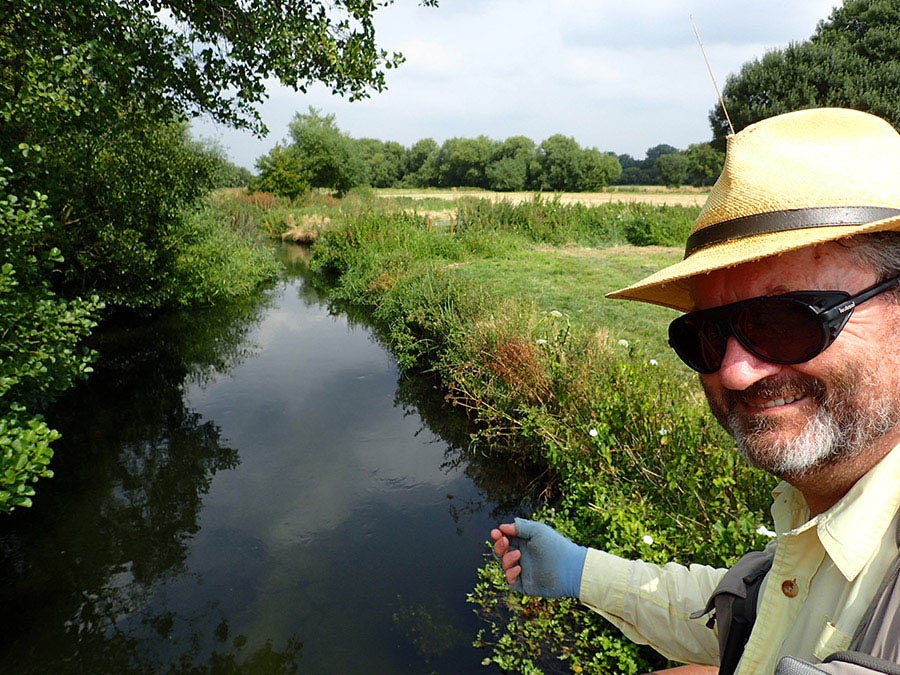For the past ten days I have been recouperating at home after elective surgery (which happily went well), but as a result there's been no fishing for me. It has, though, given me ample opportunity to re-visit a few interesting fishing writers, including Peter Hayes (Fly Fishing Outside the Box), Jeremy Lucas (Tactical Fly Fishing), Bob Wyatt (Trout Hunting) James R Babb (Crosscurrents - A Fly fisher's Progress) and Nick Lyons (The Seasonable Angler), among others. But as the saying goes, man can't live by bread alone, so I also devoured a few works by two of my favourite non-fishing authors, Bill Bryson and, for really light relief, PG Wodehouse, and feel the better for it! Bryson I found at his hilarious, side-splitting best in Down Under, his account of his experiences in Australia, a country he grew to love, along with its hazardous snakes and spiders, its poisonous jelly fish, sea crocodiles and seemingly endless outback.
It's also understandable when stuck in a hospital bed that your thoughts roam to wherever you would rather be than where you are just then. My mind persistently drifted to fishing the Sterkspruit River, or the banks of the Bokspruit, or more simply, just to sitting outside Walkerbouts Inn sipping a cold beer while looking out over the tranquil vista of the village of Rhodes. Close to the heart, close to the mind they say.
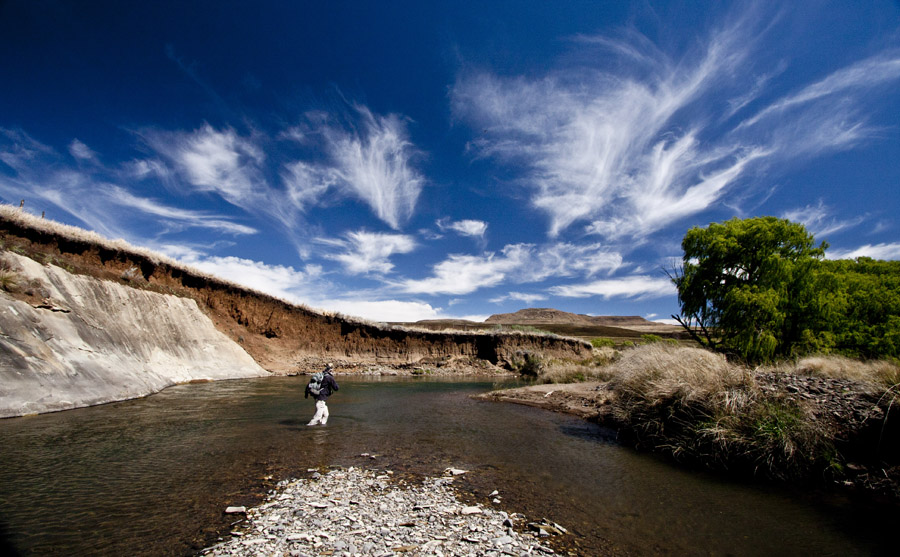
The banks of the Sterkspruit on Birkhall. (Tom Sutcliffe photograph.)
Click image to enlarge
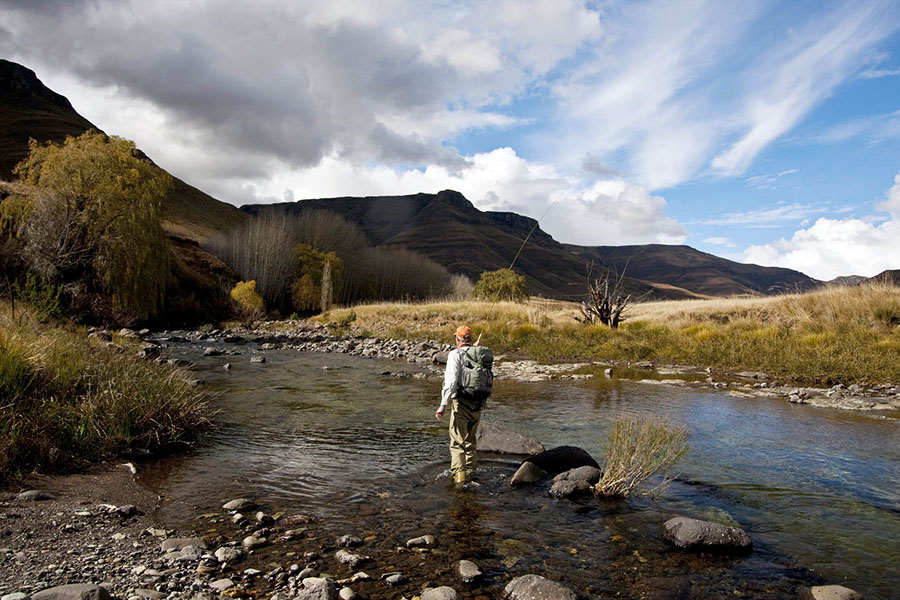
The banks of the Bokspruit River. (Tom Sutcliffe photograph.)
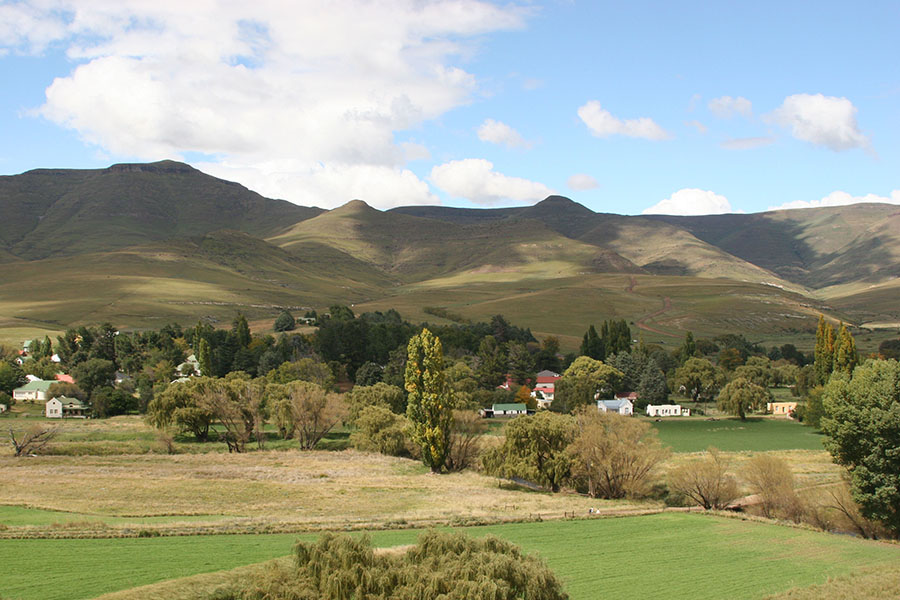
The village of Rhodes. (Tom Sutcliffe photograph.)
From Sean Mills on early spring fly fishing for bass
Says Sean Mills, Western Cape fly fisher, photographer and bass and carp expert:
I fished for a few hours yesterday at Klein Bottelary Lake just outside Cape Town. Had a blast sight fishing to bass. Most of the fish where very close to the side, with many in water barely deep enough to cover their backs.
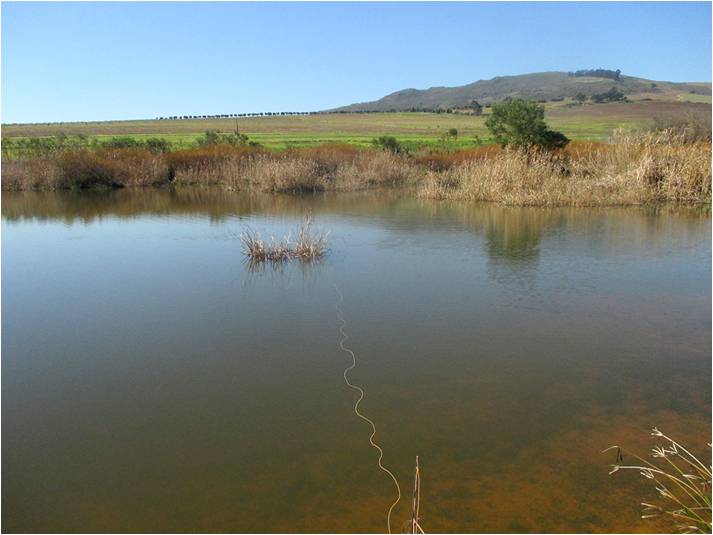
Casting to a sighted bass
I had to play cat and mouse with them by letting the fly sink to the bottom, and then twitching it a few times. Give it another two weeks and they will turn from Mossad assassins into mobster hit-men as the water continues to warm.
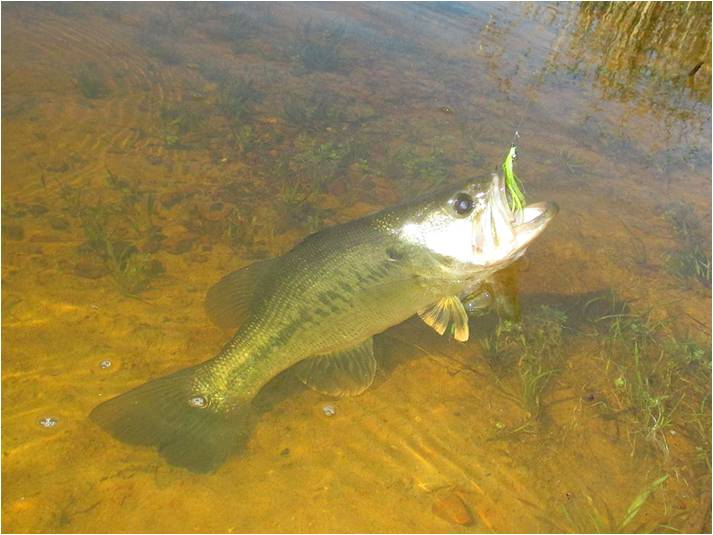
Bass from shallow water
I ended up landing 8 bass and 1 surprised blue kurper well over 2 kg.
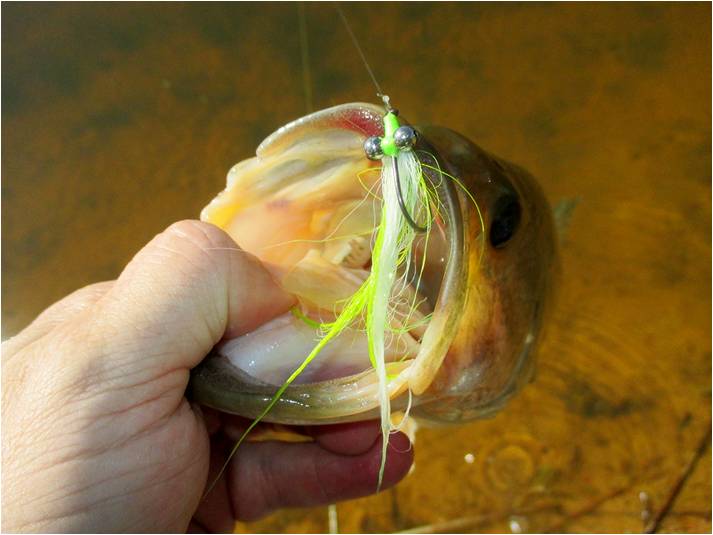
The Frizz Fry pattern
I caught on my orange fritz, Clouser Minnows, half and half with my awesome Frizz Fry pattern in green and yellow.
The biggest bass was just under 2kg.
Quotes of the month
My quotes this month are in fact from James Babb's book, Crosscurrents. I have quoted from his work before because I think that in this genre he is among the best of the crop of contemporary fly-fishing writers we have. I not only get a lot of pleasure from his work, but draw inspiration and insights from it as well.
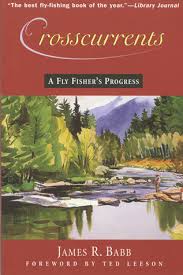
Crosscurrents - A Fly Fisher's Progress
*
On the value of fly fishing
Fly fishing I have learned in forty something years of obsessing over it, is simply too much fun to be taken seriously.
*
On saltwater fishing on Midway Atollin the North Pacific Ocean:
The nearshore waters are equally alive with GTs, amberjacks, reef sharks, groupers, and a host of pugnacious reef species including bluefin trevally and 'butaguchi' – thick-lip trevally. These gut-busters run from sixteen pounds, but tie into one on a ten-weight and you'll swear they weigh three times that. After a day of catching 'butaguchi' I felt as I did after my first week of navy boot camp, when I was slow learning the relationship between smart-ass comments and push-ups.
*
On fishing for Atlantic salmon in Scotland on the River Dee in high water:
Even with a two-hander shouldering much of the load, fishing these high waters approximates actual work, with none of the effortless Arthur Wood-style drifting of feathery classic salmon patterns that characterises the sweet days of summer. In April's frigid spates, you need to dredge the bottom with a heavy full-sink or sink-tip line and big tube flies that look like feathered plumbing fittings if you're to goad a cold, indifferent salmon into striking.
Images of the month
Clem Booth says:
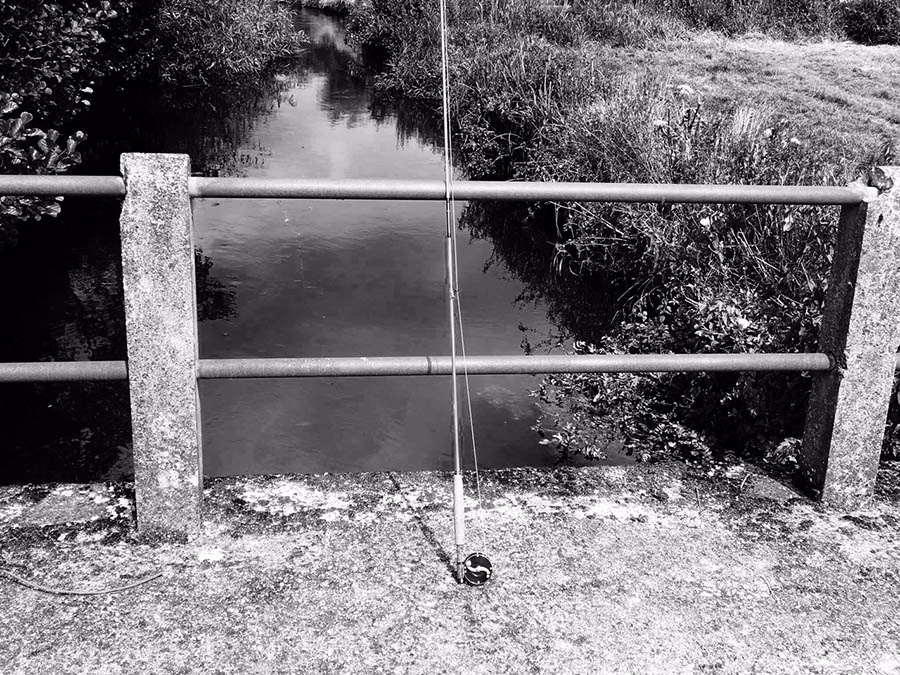
I like this image.......not old but it's timeless. Looking at rivers from bridges is what we fly fishers have done ever since Pa fell off the bus. The pool below is always full of intrigue and promise.
(Never a truer word spoken Clem. Hands up any fly fisher who isn't obsessively fascinated with bridges! I never met one. Well, okay, let's just say I never met that many. TS.)
Says Adrian Clegg:
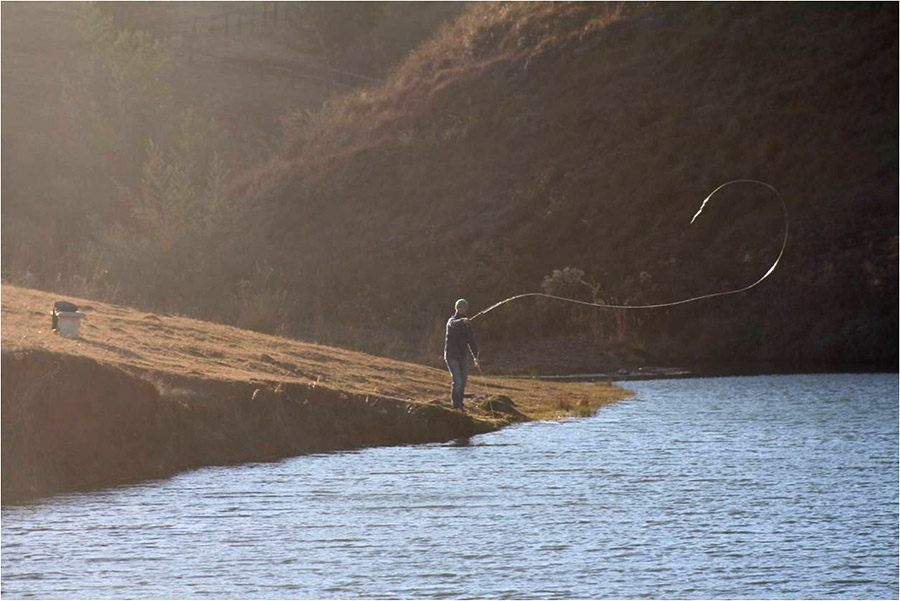
I fished in Machadadorp with my son in law recently. He fished, I took pictures!
Symmetry:
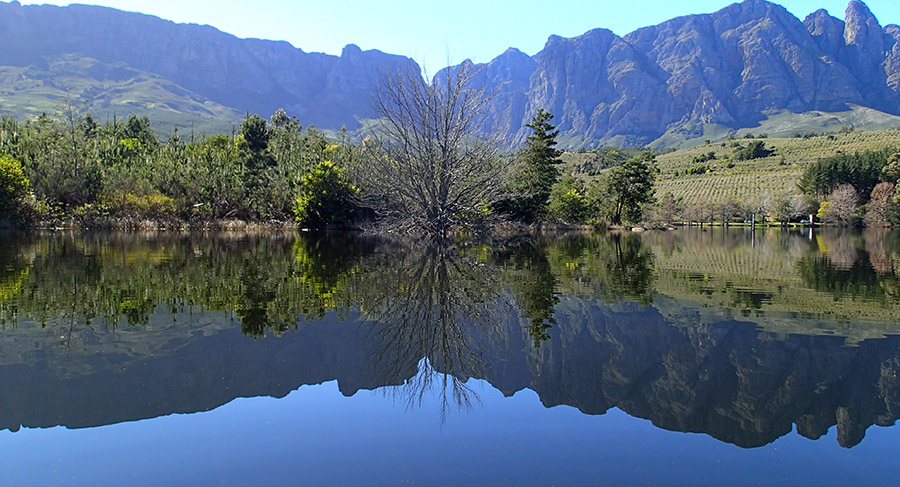
Bluegum Dam, Lourensford Estate, Somerset West. Robin Douglas photograph.
Items for sale
Shilton reel
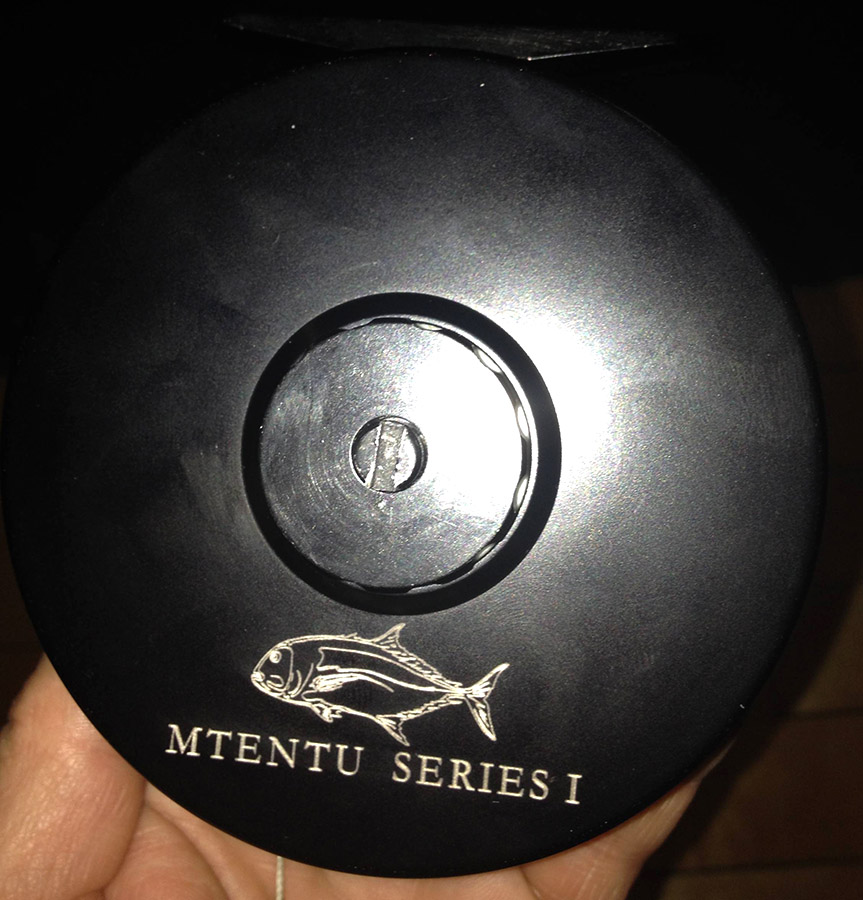
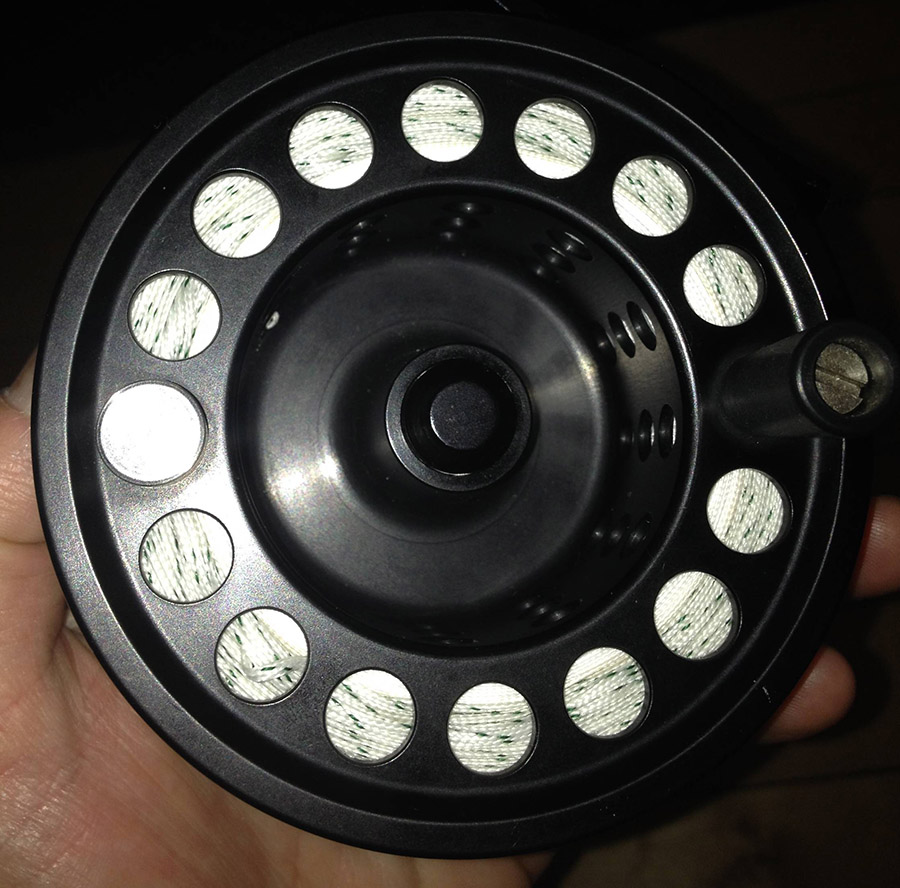
Laurence Rowland offers a Mtentu Series 1 Shilton reel in excellent condition. Contact him on This email address is being protected from spambots. You need JavaScript enabled to view it.">This email address is being protected from spambots. You need JavaScript enabled to view it.
Waders and float tube
Charmaine offers robust, brand new Snowbee fly-fishing waders, chest high, with accompanying fins and fly-fishing kick boat. What offers? Contact Charmaine at This email address is being protected from spambots. You need JavaScript enabled to view it.">This email address is being protected from spambots. You need JavaScript enabled to view it.
A collectable and most interesting fly rod
Just to show that the scope of this newsletter has increased somewhat I had an email from a woman living on the River Test in Hampshire wanting to value and sell some of her late husband's fishing gear. Among the items was a Hardy cane rod made by Tom Moran!
I took a gulp and hurriedly referred her missive to bamboo rod guru Clem Booth, who in turn has asked Edward Barder's professional opinion, he being arguably the UK's leading bamboo rod maker. Morans are few and far between. Some of the last blanks he made at Hardy's – and he probably made no more than ten in all – were actually finished by his Hardy co-worker and good friend, Calum Gladstone. But even if this one was finished by Gladstone, it's still a very valuable piece and could fetch as much as £1800 (R34 000) – or more depending on the rod's precise pedigree. But, believe me, establishing that pedigree will involve an extremely careful investigation of many aspects of the rod itself, like its taper, how the varnishing was applied, and so on. It's clearly a more precise and complex science than you or I could ever imagine! I will report back on this interesting subject, with pictures I hope, in a future newsletter.
Protea fly-fishing team and squeezing tomatoes ripe.
The South African (Protea) fly-fishing team takes part in the 36th FIPS-MOUCHE World Fly-fishing Championships in Vail Colorado USA from the 11th to the 18th of September 2016. I know I will be joined by anglers throughout the country in wishing this talented and dedicated side the success they deserve.
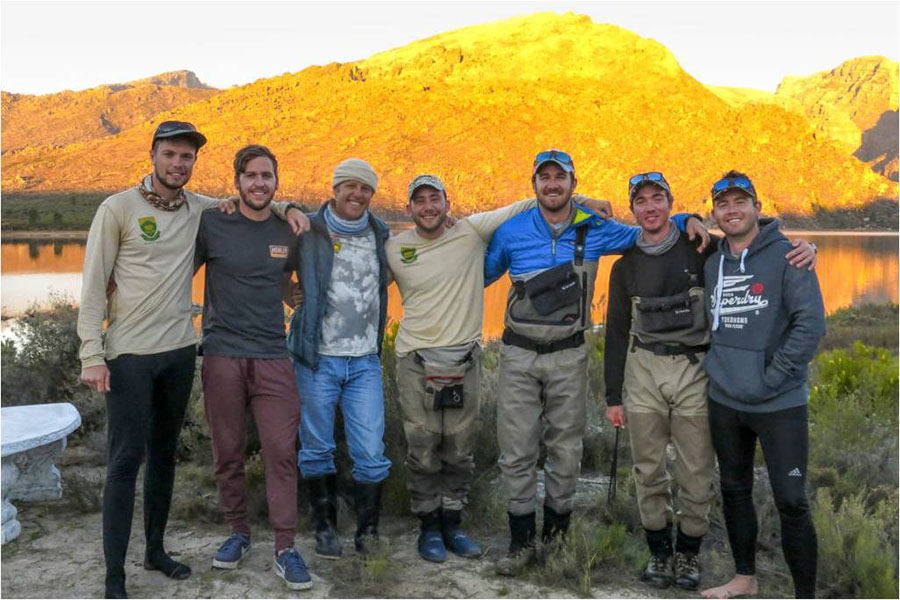
The Protea fly-fishing team left to right: Ronald Smith, Matt Gorlei, MC Coetzer (team captain), Daniel Factor, Christiaan Pretorius, Nic van Rensburg, Matt Rich. (The team manager is Gerrit Redpath.)
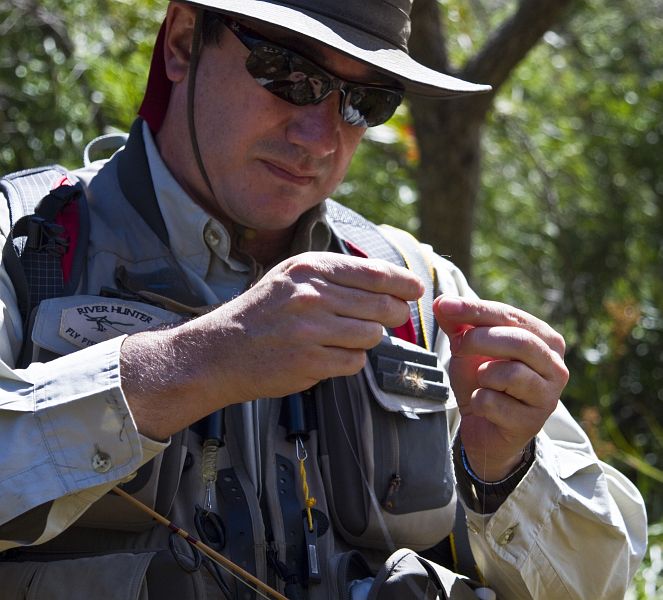
Gerrit Redpath. (Tom Sutcliffe photograph.)
I guess enough river water has flowed over my waders by now to qualify me to offer the team one modest piece of advice. It would be to remember that when the fishing gets tough – as at times it invariably will – that you can't make things happen by continually ringing the changes, anymore than you can squeeze a tomato ripe. Things happen when your mind is right; when you are relaxed; when you keep the faith; meaning when you persevere with tireless patience and persistence doing what you understand, know, have long practised and have faith in.
In all the times I've known when the fishing swung to seemingly stone dead the hurried ringing of changes invariably never worked. In fact, this particular recourse is more frequently counterproductive. Change is necessary at times, sure, but it should never be too hurried and it rarely trumps staying with your proven, time-tested techniques – as long as they're well executed of course.
The team couldn't be in better hands. MC Coetzer's credentials are way beyond question, and, as I know and understand Gerrit Redpath, so are his.
Team sponsors include Stealth, Smith optics, Airflow, Hanak hooks via StreamX, Trouthunter, Kia Motors, MW Finance and Konica Minolta (Bloemfontein).
Fundamental Fly Tying
Fundamental Fly Tying is the second DVD by actor, fly tier and crazy man Gordon van der Spuy. The DVD aims to approach tying differently by doing away with what Gordon refers to as 'pattern mentality'. Gordon believes in teaching his students the logic behind the tying, believing that if people understand what it is they are doing and why they are doing it, it makes a lot more sense. Tying flies is not just about copying or recreating patterns. Gordon believes in the concept of form following function. In other words, figure out what the pattern needs to actually do whilst being fished and tie it accordingly, allowing the aesthetic aspects to be determined by the pattern's intended function.
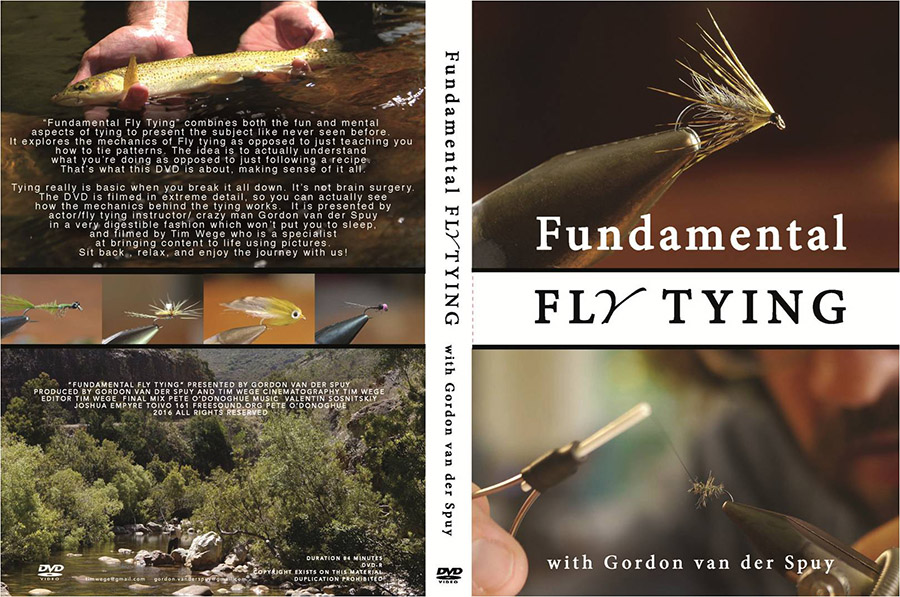
Fundamental Fly Tying
The DVD is shot by award winning documentary film maker Tim Wege and approaches the visual aspect of the tying from the tier's perspective with an in depth and detailed look at the fundamental techniques and concepts that form the building blocks of all tying. Says Gordon, ' Fly tying has never been shot in this detail.'
The DVD is available from Gordon directly ( This email address is being protected from spambots. You need JavaScript enabled to view it.">This email address is being protected from spambots. You need JavaScript enabled to view it.) or can be purchased from Wildfly in Nottingham Road or The Fishing pro Shop in Pretoria.
Fly fishing in the UK from Clem Booth in London
Says Clem, looking back on his chalkstream season so far:
Finally summer arrived in England and with it, warmer water temperatures and far more fussy fish! At least, that's my story! Still, even though the pickings have been leaner in terms of numbers of fish, some beautiful, broad shouldered trout and chub found their way to my net. My two favourite rivers, the Avon and Loddon, are both in sensational shape with decent flows deep into the summer. It is not this way every year. We rely on the aquifers being replenished in the winter and happily the last couple of years have been kinder to the rivers. We get to fish in some beautiful places and summer has its special charm. Aren't we lucky?
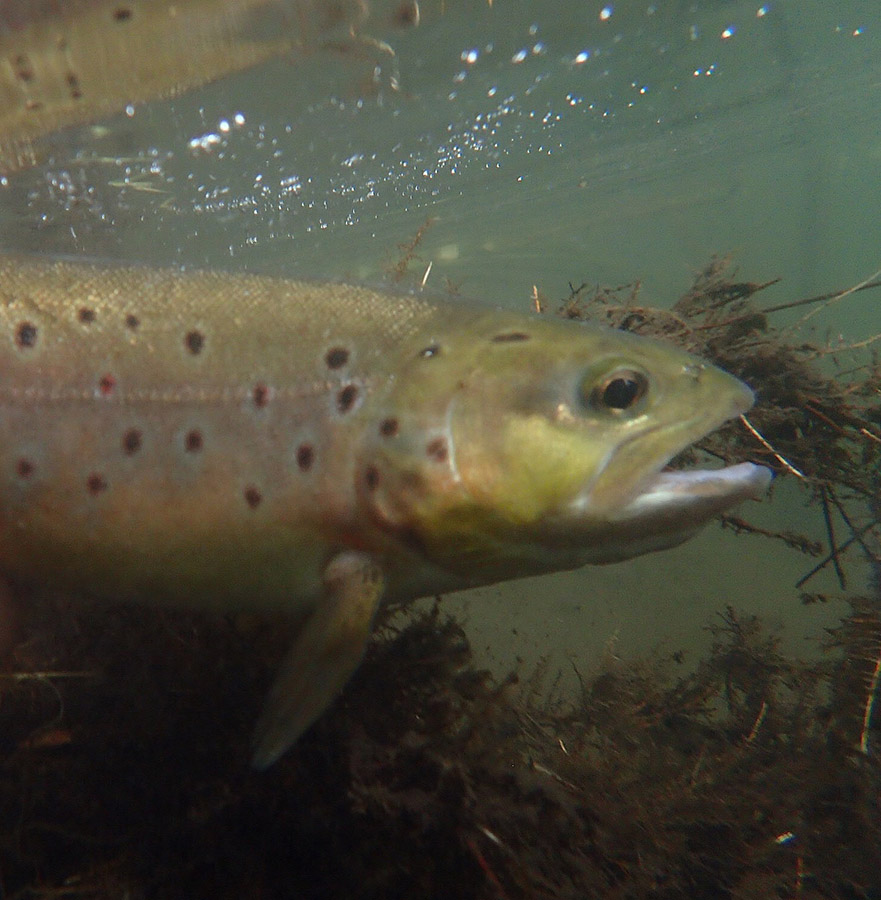
Beautiful brownie after a chance meeting on the Loddon
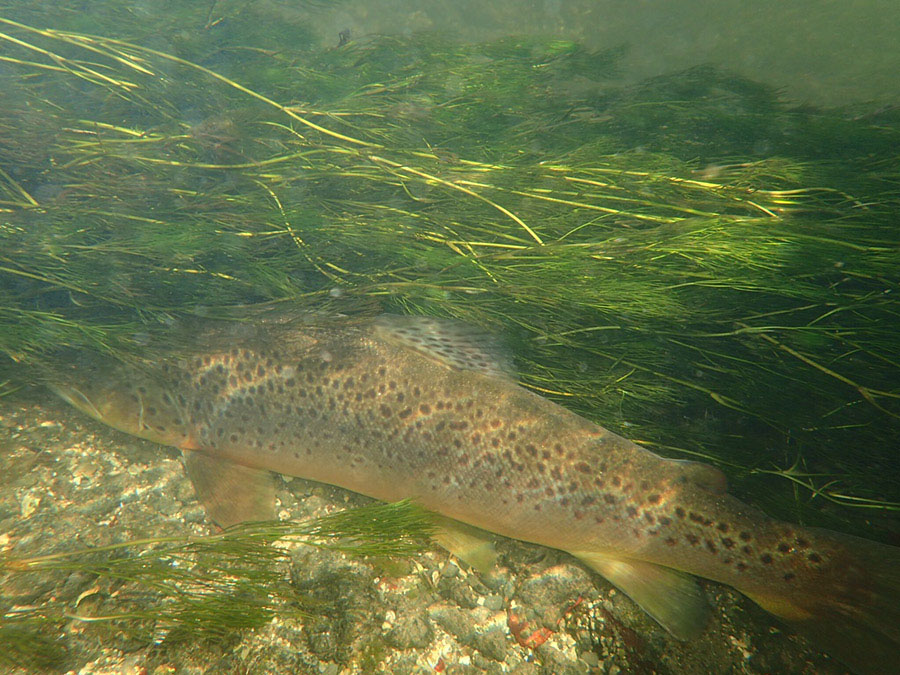
A great four pound brownie on the Avon. After release, it stayed around for a photo shoot!
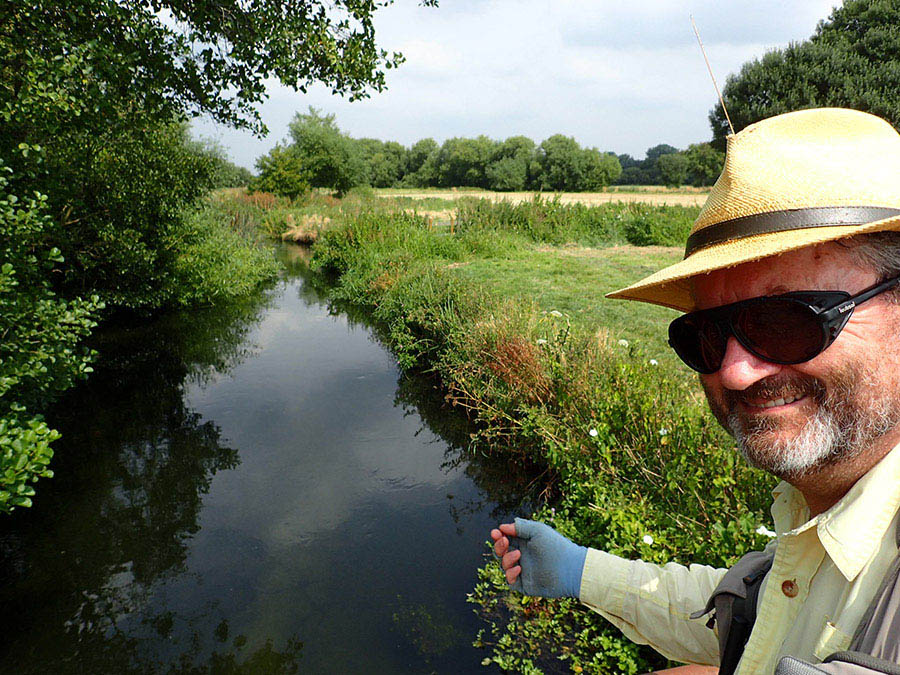
Pointing out the beautiful River Loddon
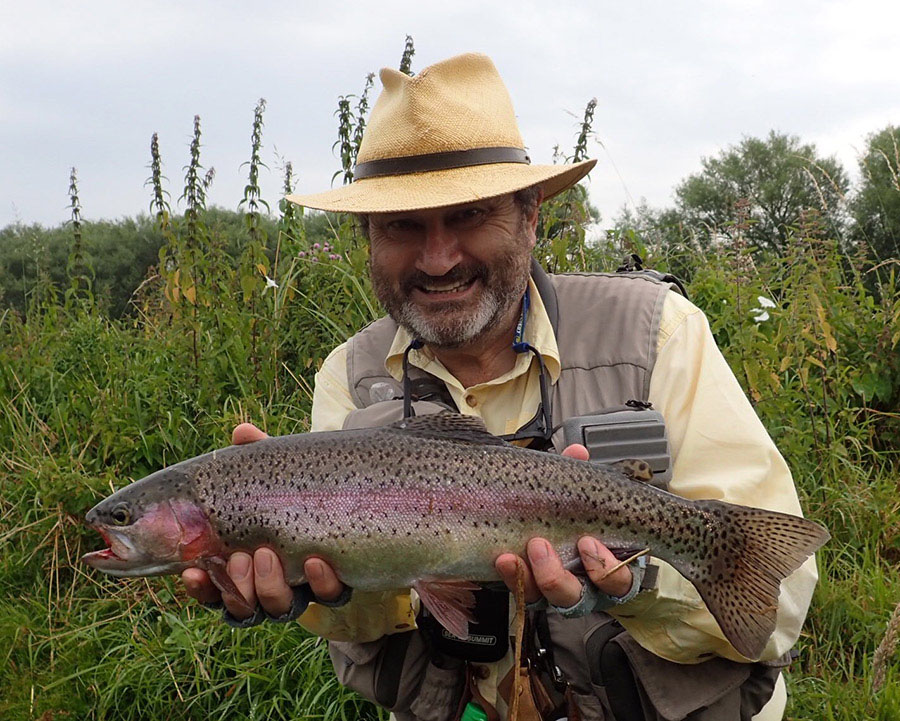
Big Loddon rainbow; broad shouldered and strong as an ox.
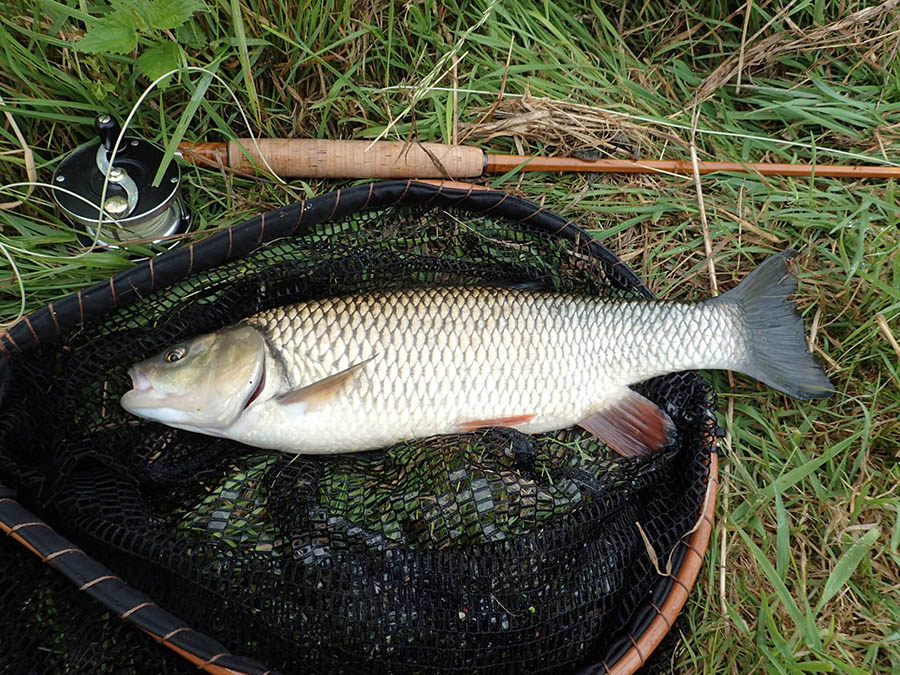
Wonderful chub tamed after a helluva battle on a Barder cane rod.
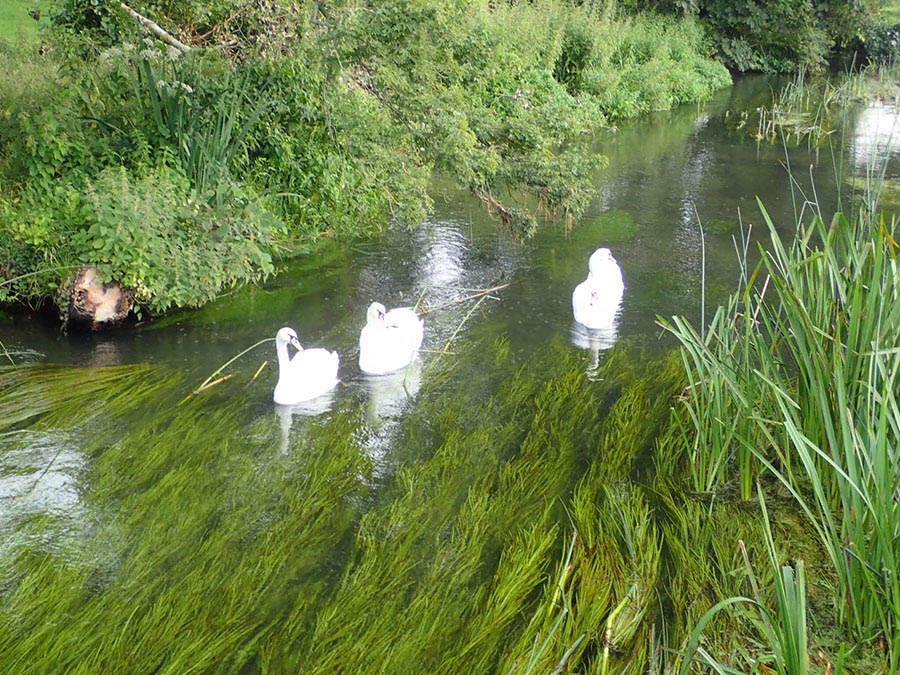
The beauty of the Loddon.
The Seal’s Fur Brush by Ed Herbst
When I first started nymph fishing more than three decades ago, Dave Whitlock and Charles Brooks were my long distance tutors, along with Frank Sawyer and Oliver Kite.
The Assam Dragon was one of Brooks’ favourite patterns – seals fur on the hide, palmered up the hook shank and topped off with a partridge hackle.
About two years ago I realised that the Assam Dragon could be improved with the new range of jig hooks that became available through competition fly fishing. Combined with glass eyes and rubber hackle from Veniards and zonker strips, the basic Assam Dragon dressing provided a very useful, impressionistic imitation of the two staple foods for trout in South African dams, namely dragon fly nymphs and crabs.
That resulted in the Lakenvlei Dragon, named after the Lakenvlei Dam near the fruit farming town of Ceres, a 90 minute drive from Cape Town.
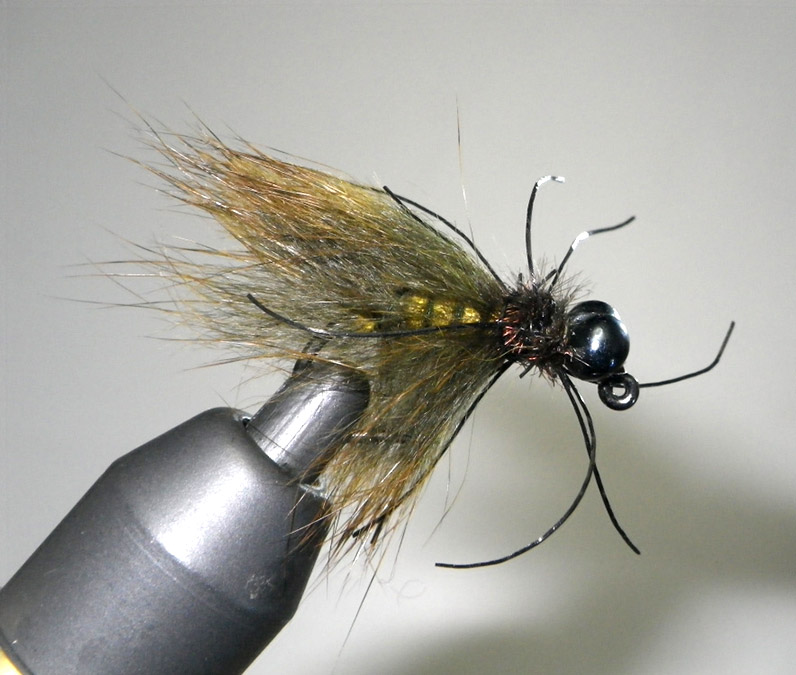
A Lakenvlei Dragon tied with pine squirrel and featuring the Veniard damsel eyes and rubber hackle
It proved successful from the start and I subsequently developed a Booby version using black Veniards Floozeyes which turned out to be lethal.
There is now a wide range of zonker strips available - rabbit, pine squirrel, mink and muskrat being my favourites.
When Marcel Terblanche, the professional fly tier from Franschoek bought one of the exquisitely engineered dubbing brush spinners from Jay Smit – he calls it the Long Fibre Brush Maker – I offered Marcel some pieces of tanned Cape Fur Seal skin.
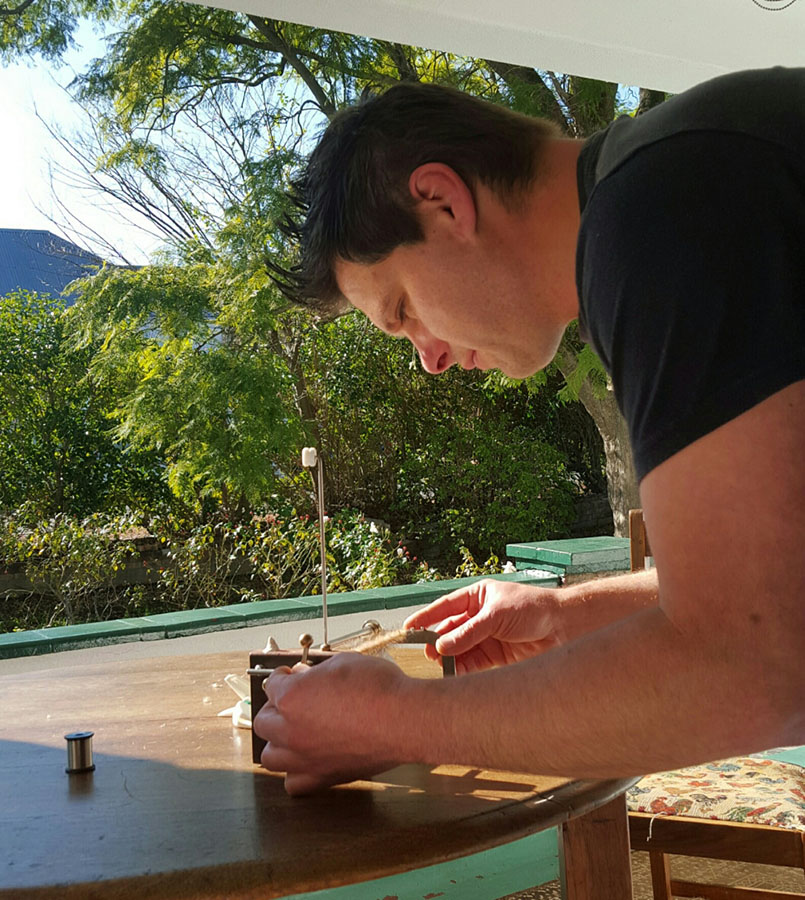
Marcel Terblanche loading Jay Smit’s dubbing spinner
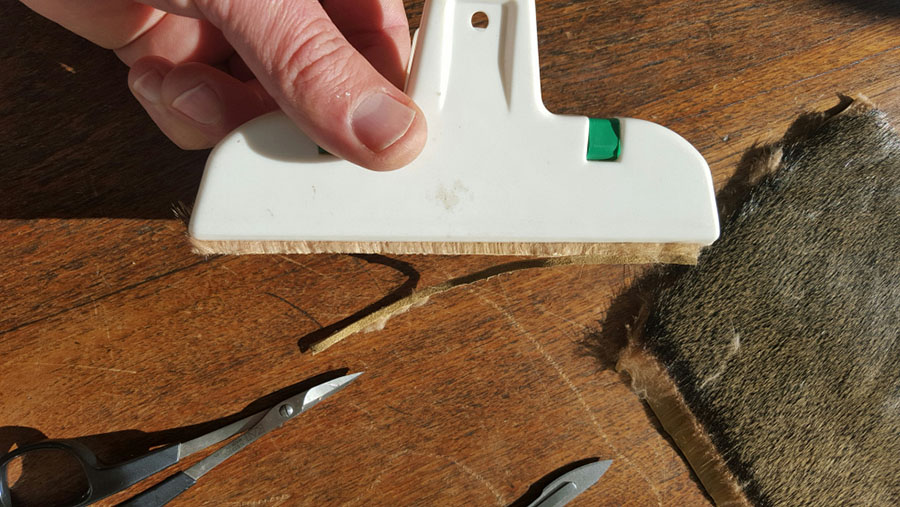
The first step in the process is to hold the fur in a plastic clamp and cut away the hide
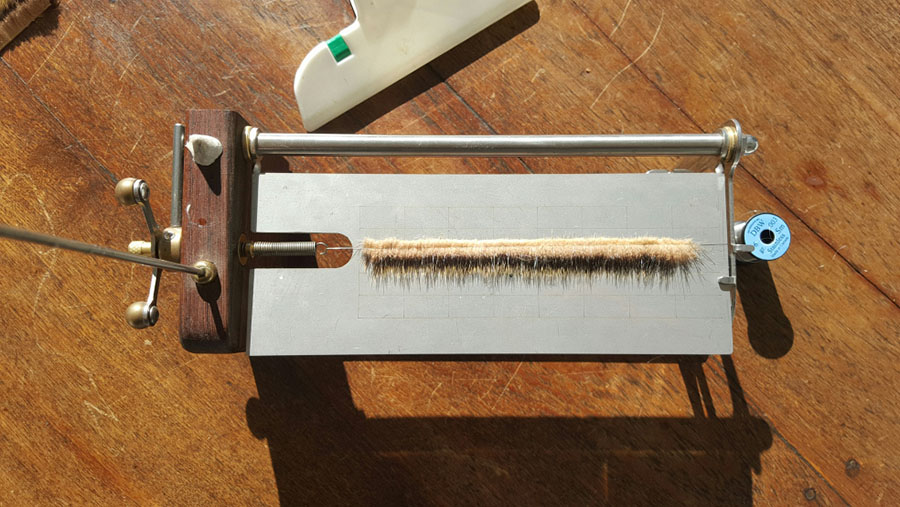
The fur is then placed between two layers of stainless steel wire
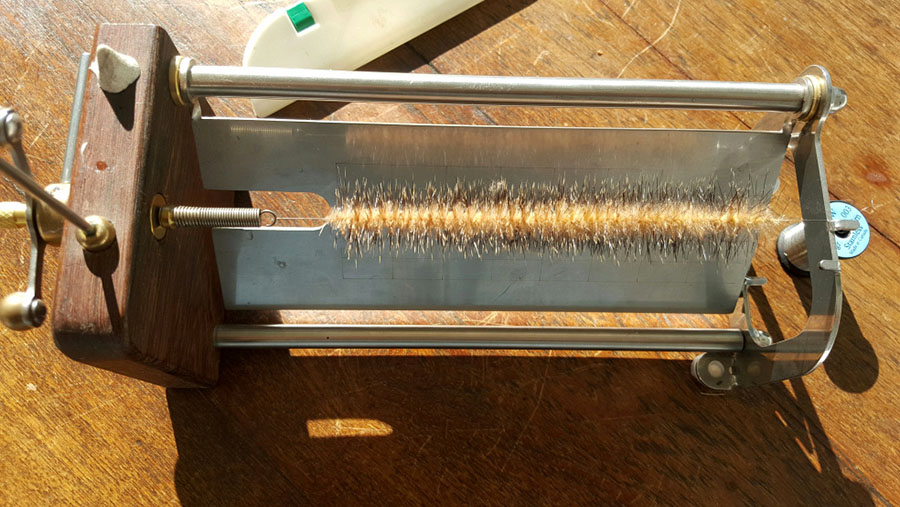
A two-tone dubbing brush results when the fur is spun
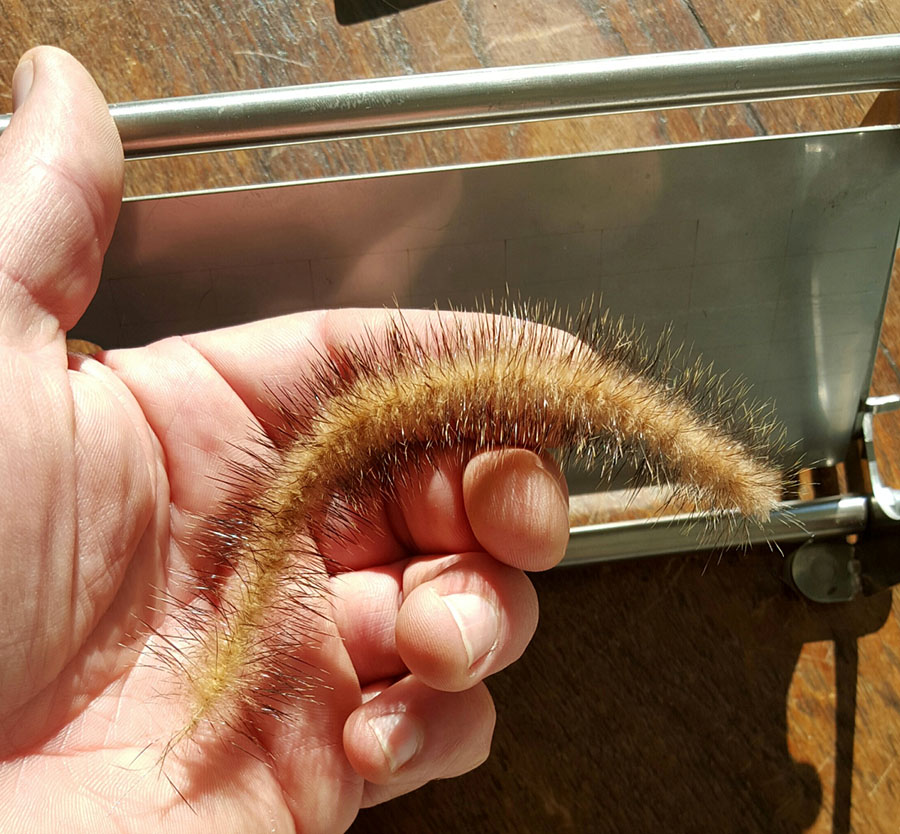
The seals fur dubbing brush is soft, durable and easy to tie with
The resulting brushes were impressive with the soft, tan under fur forming the background to the wonderfully mottled guard hairs.
To assist the jig hook to ride hook point up, I use flat lead. On the Booby version I use one piece tied along the top of the hook shank and on the version with the Veniard glass bead eyes I wrap the entire hook shank with flat lead.
There is another way of tipping a hook over so that it rides point up.
Most of the R&D on trout was done decades ago by men like Halford, Skues and Sawyer. Today the most extensive research and testing is happening in developing flies for marine species and carp. This is because companies like Umqua pay a royalty and guides can supplement their income in this way.
An excellent example is Jay Zimmerman and one of the things I learned from his outstanding book, The Best Carp flies – How to Tie and Fish Them is that an easy way to tip a fly over is to tie the tail around the bend of the hook so that it is pointing downwards – the Headstand being a good example.
Marcel is sourcing seal skins – they are culled in Namibia – and hopes to have them as part of his inventory soon. He can, in the meantime offer you dubbing brushes in other furs.
Fur dyed in picric acid has an amazing olive lustre apparently and this is something Marcel wants to explore.
Dressing
- # 8 jig hook – I like Hanak or Dohiku
Weight Flat lead or substitute
Thread Black 18/0 Semperfli Nano Silk
Tail Marabou tied around the bend and pointing downwards
Body Fur dubbing brush
Eyes Veniard Glass Damsel Twin Eye Beads or Floozeyes
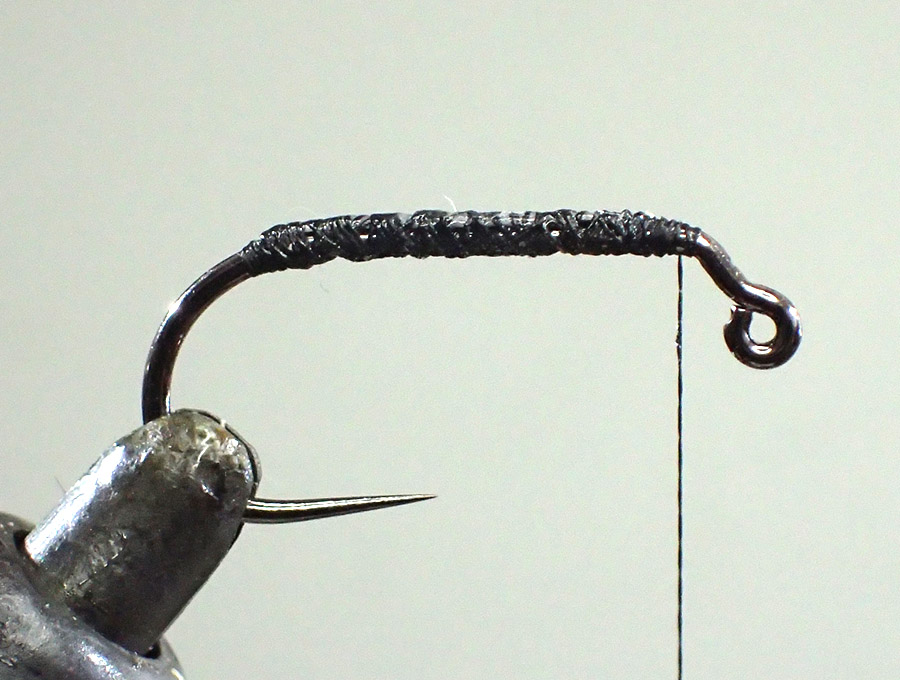
Attach the lead to the hook shank
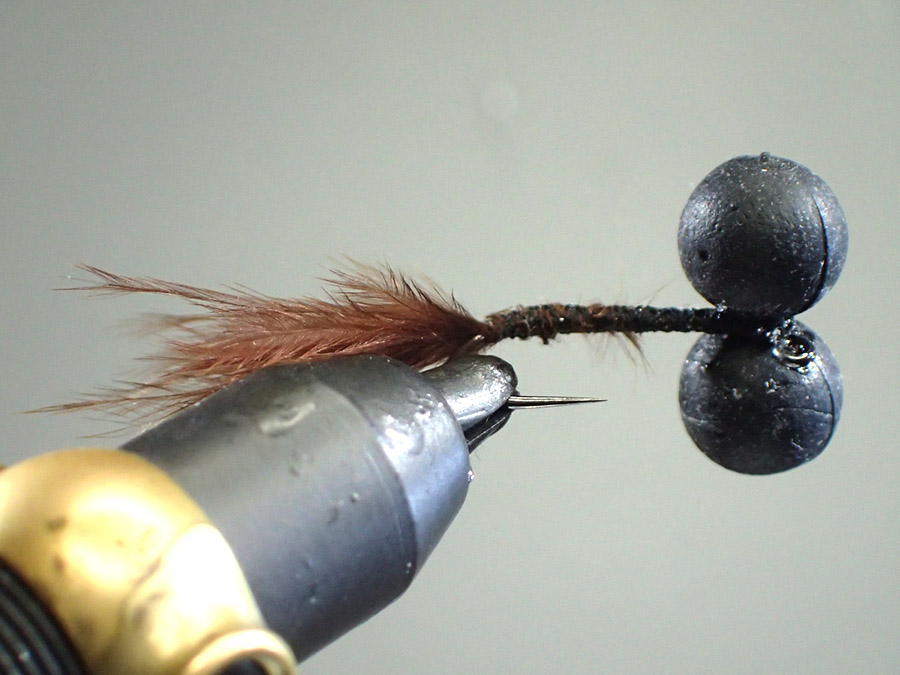
Tie in the marabou tail and the Booby eyes or substitute
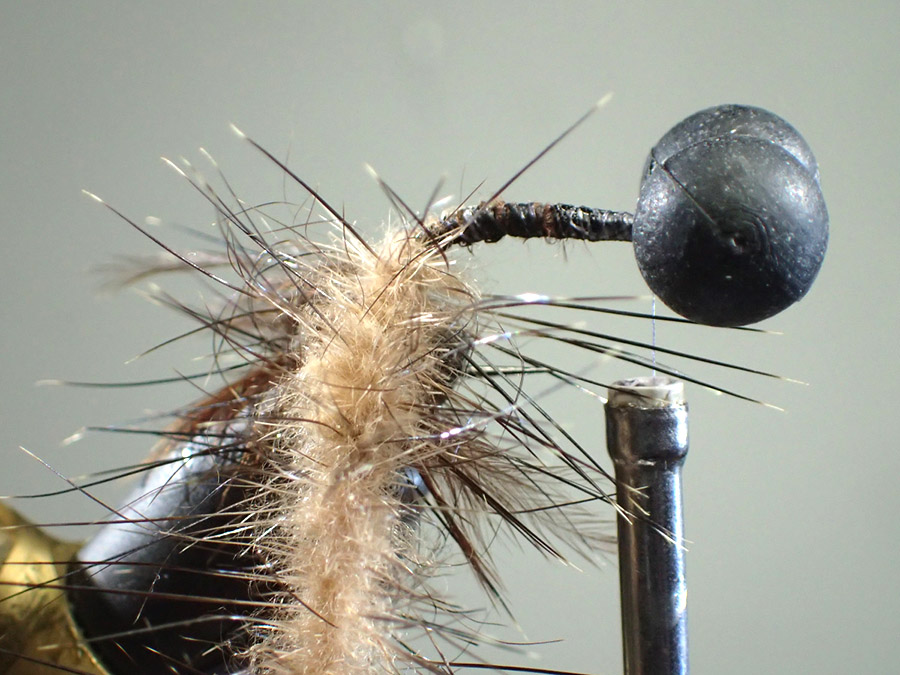
Attach the dubbing brush by the wire core and add a little superglue to secure it.
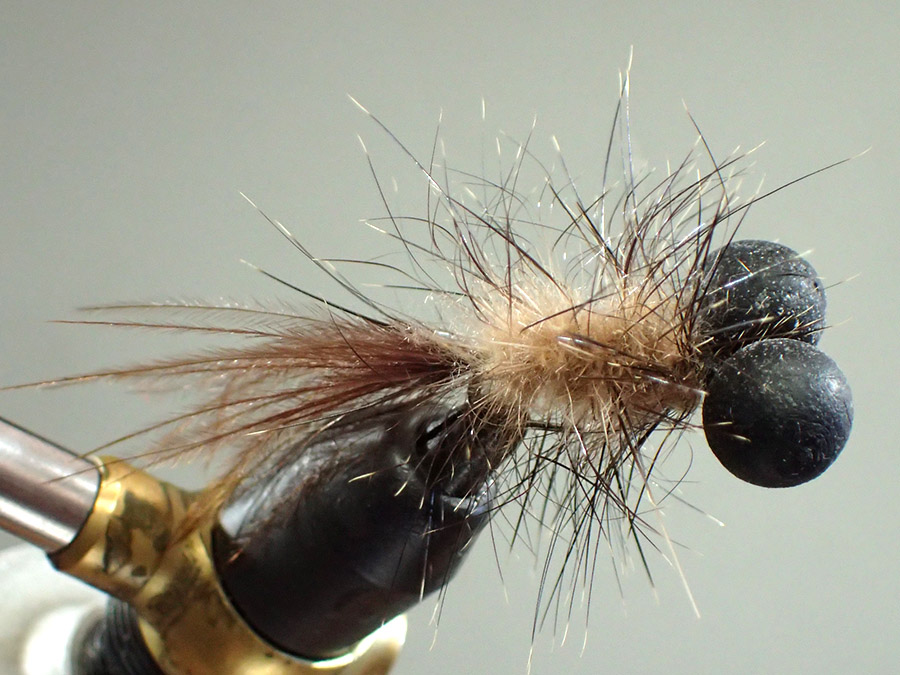
Wind the dubbing brush to the eyes, tie off and whip finish. You can add a soft hackle or rubber legs to provide extra movement to the fly if you wish
Tom Sutcliffe August 2016

